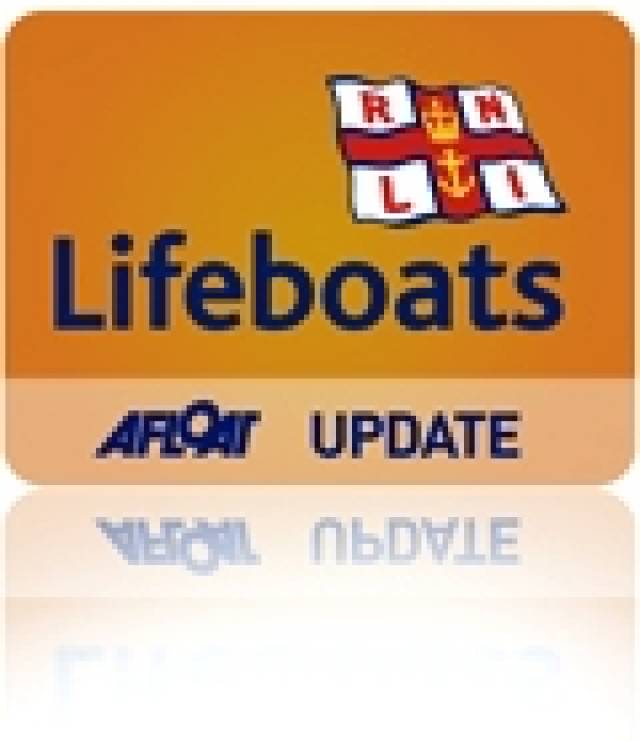#lifeboat – A brave Dun Laoghaire inshore lifeboat trio have been honoured with an RNLI award for a difficult rescue off Sandymount last year. Helmsman Rory Bolton along with Dan O'Sullivan and Damien Payne have received 'special recognition' and a framed Letter of Thanks.
As Afloat.ie reported at the time, the trio rescued a kitesurfer in hazardous weather off Sandymount when the person was unable to get ashore in dangerous surf conditions.
The D-Class Inshore lifeboat launched from the ILB Boathouse at Dun Laoghaire's East Pier on the morning of New Year's Day as winds gusted to Gale Force 8.
After assessing conditions on Dublin Bay, the lifeboat proceeded towards the Booterstown end of Sandymount Strand where the Dun Laoghaire Coast Guard Unit could see the casualty in the breaking surf. The kitesurfer was taken on board the lifeboat and reunited with his family back at the lifeboat station. Medical attention was not needed.
The Director of Operations for the RNLI George Rawlinson noted that the "poor visibility, gale force winds and rough seas of up to four metres" were particularly challenging.
Recovery of the casualty from the breaking surf required the best standards of helmsmanship by Rory Bolton. Excellent seamanship ensured a safe and effective operation at the limits of the ILB's capabilities.
The award was presented to Rory Bolton who accepted it on behalf of the crew by Owen Medland, Divisional Operations Manager at the lifeboat station in Dun Laoghaire.
The D-Class Inshore lifeboat (ILB) is a fast, fully-inflatable boat equipped with VHF Radio and electronic navigation as well as First Aid equipment. The D-Class at Dun Laoghaire performs around half of the station's annual call-outs. In 2014, Dun Laoghaire RNLI launched 56 times and brought 55 people to safety.
































































